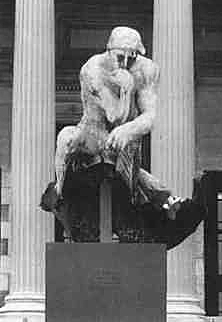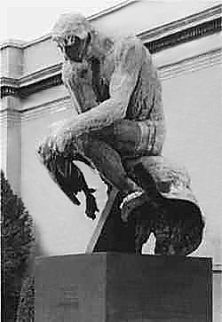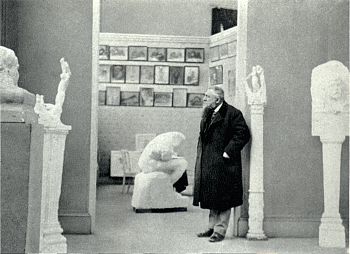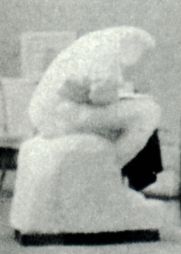H. de Roos - The critique of the toronto exhibition |
|||
|
THE DAMAGED CLEVELAND THINKER CAST DEFENDED BY ALBERT ELSEN |
|||
|
|
|
||
|
According to an article by Bruce Christman, Chief Conservator at the Cleveland Museum of Art, the Cleveland life-time enlarged Thinker cast was blown up by radical protesters in 1970. The explosion destroyed the base and the lower part of the legs, and the remaining sculpture was knocked off of its pedestal. In consultations, Albert Elsen pleaded for further displaying the destroyed piece: A number of opinions were expressed, ranging from mounting the object as it was to obtaining a new cast from the Rodin Museum. One of the more knowledgeable and reasoned letters came from Professor Albert Elsen, Stanford University, to Sherman Lee, dated June 18, 1971: "You ask me what, as a Rodin scholar of over 20
years, I think Rodin's position would have been in this circumstance. In
his lifetime he himself would have either repaired the work or supervised
a new cast. I must say that it is possible he might have consented to
restoration by someone else whose work he approved of.
In Rodin's view, his sculptures were so well made, so beautifully formed and expressive throughout, that like classical fragments, parts of his work could hold up as being complete in themselves. Even in its present, ruined state, your Thinker is still an impressive sculpture and supports Rodin's view. Only Rodin's work by its history and the way it was made can withstand such a tragedy, with any degree of dignity. " [From: Twenty-five years after the bomb: Maintaining ClevelandŽs Thinker, in: JAIC 1998, Volume 37, Number 2, Article 2, pp. 173 to 186]
|
|||



